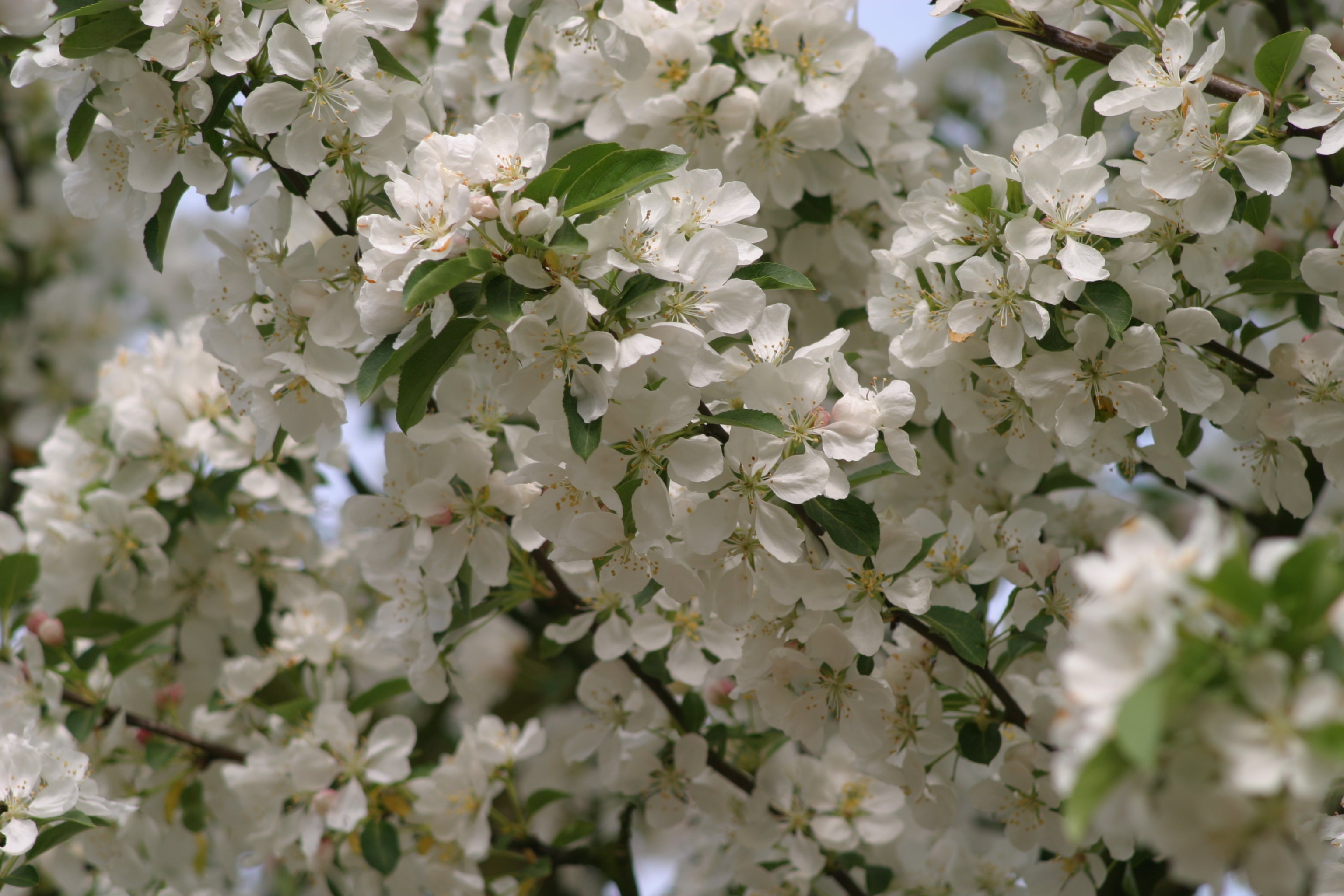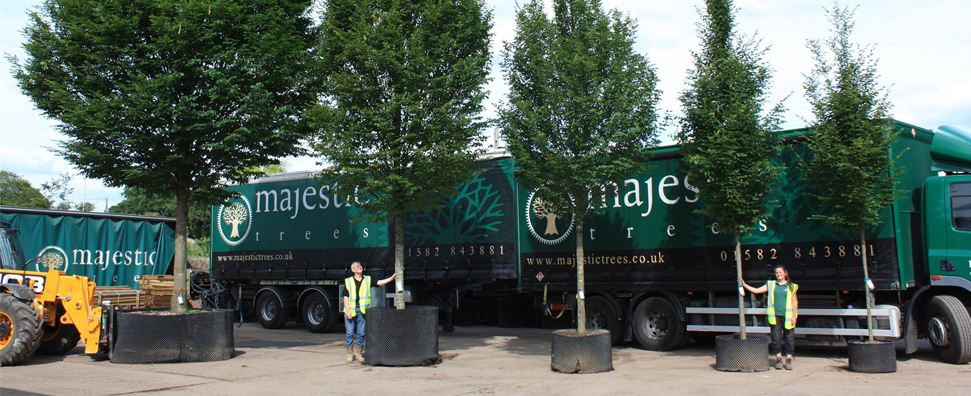
OUR TREES
What Size Tree?
What Size Tree?
We stock thousands of trees, but not all varieties will be available in all sizes, so establishing early on what sort of size trees you’re after is a great way to quickly get to the most relevant options.
To decide on your optimal size range, we recommend weighing up the three main factors below.
1. Need For Instant Impact

If your reason for planting the tree is to screen out an unsightly view before you put your house on the market, then your need for instant impact is pretty high. If you’d just like to get some autumn colour going in the garden, well… you may not mind starting with a younger tree and watching it gradually mature over the years. Whatever your planting objectives may be, it’s a good idea to work out the dimensions each tree would need to be in order to achieve them (see ‘How to Work Out Dimensions’ below), and how long you’re prepared (or able) to wait for your chosen tree(s) to reach that size.
Effects of foreshortening and perspective can play tricks on the eye, so it’s important to use a scale reference. A large measuring stick is ideal, but it you’ve not got one to hand, a person (or even a chair) and a pencil can work almost as well. Have the person stand in your proposed planting position whilst you move around the garden, or through the house, viewing the position from several vantage points. At each vantage point, estimate the optimum height required by holding the pencil up vertically so that the tip of the pencil is level with the feet of your helper (meter stick, chair…), and then placing your thumbnail on the pencil shaft to mark where the top of his/her head reaches. Using the person’s known height, you now have a scale reference from that vantage point. Without moving the position of your thumbnail on the pencil, move the pencil along vertically to estimate the ideal height of a tree from that vantage point.
Top tip: try a few different planting positions: due to effects of perspective you will likely find that in certain positions a far smaller specimen will achieve your objectives.
2. Site Access Conditions
Although our planting teams can overcome most site access problems with careful planning, there are a few simple rules of thumb worth bearing in mind to help minimize planting costs. We’ll talk you through the process below, but please feel free to pick up the phone or drop us an email and we’ll work it all out for you.
1. Perform this Quick Access Assessment:
- Consider the approach to the site and the most logical offloading position. Note any parking or HGV access restrictions.
- Establish the 'minimum access width' for each planting position by walking from the intended position of offloading (usually the road or a driveway) along the path of access to each position, measuring the narrowest width of access along each path and noting any tight corners or obstacles such as steps, soft ground, overhead eaves, etc. along the access paths.
- If you have noted any obstacles or parking/HGV access restrictions, you may wish to ask one of our advisors to help refine the optimum size range for your specimens.
2. Click the option below which best describes your minimum access width(s) to learn how the sizes of the trees you choose may impact your planting costs.
With a minimum width access of 3 metres or more, we can off-load, move and position any tree on our nursery, but here are some size thresholds to bear in mind:
Under 160L. If you are only considering one or two specimens, then trees with pot sizes under 160L are usually most economical to plant, as they don’t normally require use of an HGV or forklift.
160- 200L. We can sometimes manoeuvre stock of this size into position without recourse to heavy machinery, which, if you are only planting one or two trees, can save on planting costs. If you’ve seen something you like in this size range, but are keen to keep planting costs to a minimum or wish to avoid having any heavy machinery on site, it’s well worth discussing possibilities with an advisor.
201-1200L. Trees of this size can usually be planted with relative ease using our specialist handling equipment, and are well worth the increase in planting cost for the impact they provide.
Over 1200L. Planting truly majestic specimens such as these need some careful planning and a little more investment in planting, but provide spectacular instant impact.
Under 160L. If you are only considering one or two specimens, then trees with pot sizes under 160L are usually most economical to plant, as they don’t normally require use of an HGV or forklift.
160L-200L. We can sometimes manoeuvre stock of this size into position without recourse to heavy machinery, so if you see something you like in this pot size range it’s worth talking the possibilities through with an advisor.
201-1200L. Trees of this size may still be practical to plant with a modest uplift in cost, depending on the distance beyond the narrowest point and the obstacles between. We suggest asking an advisor for guidance.
Over 1200L. Trees of this size may still be possible to plant, but will likely require use of a crane or other large machinery, so are likely to require significant additional investment in planting costs.
Under 160L. This is the optimal size range for garden gate access. No stairs or tight turns please!
160-200L. We can sometimes manoeuvre stock of this size into position depending on the individual specimens and the other site access conditions, so it’s worth discussing with an advisor if you’d like to consider a tree in this size range.
201-1200L. Trees of this size may still be possible to plant, depending on whether the planting position can be accessed with our in-house lifting equipment (moderate increase in cost) or through the use of a crane (significant increase in cost).
Over 1200L. Planting trees of this size may not be practical unless the planting position is very near a large offload hard standing. A crane is likely to be necessary, which can add significantly to costs. In some cases the impact may be worth the investment!
We can probably get some of our youngest trees (pot sizes 120 litres or less) into position and planted fairly economically. An advisor can guide you on what range of pot size to keep within if you supply your measurements and confirm other access details. If you have your heart set on something bigger, we may be able to pull that off without too much of an uplift in cost, depending on other access conditions, or, if need be, with the help of a crane. In the latter case, the cost can be significant, but well worth it if you are looking for an instant transformation.
85L or less. This really is the maximum pot size we can consider taking through the house or window. We’d love to say yes to something bigger, but the chances of scratches, dings, and breakages are just too great (and that’s just to our planting crew!). There are occasionally exceptions to this rule of thumb, of course, so it may be worth a conversation.
Over 85L. If you have your heart set on something bigger, we can probably pull that off with the help of a crane or special equipment. Costs can be significant, but may well be worth it if you are looking for an instant transformation. Cost of crane hire can vary considerably depending on two factors 1) the size of the crane required and 2) whether road closure will be necessary (for example, the fee for road closure in London Borough of Camden is £3,000!).
3. Budget Considerations
You need only glance down our stocklist to see that we cater for an extremely wide range of budgets. Our advisors are here to advise, not ‘sell up’, so we’d encourage you to speak candidly to them about your budget so they can tailor their suggestions accordingly.
For example, if you’re struggling to achieve your planting objectives within your budget, they may be able to suggest faster growing varieties which will give a similar effect at a more economical cost, or find opportunities for significant savings simply by downsizing a specimen slightly to reduce planting costs.
The same applies for those in the pleasant position of having quite a generous budget to work with. We have a vast range of trees at a vast range of sizes and price ranges, so it’s very helpful for your advisor to have some idea where to start with their suggestions.

